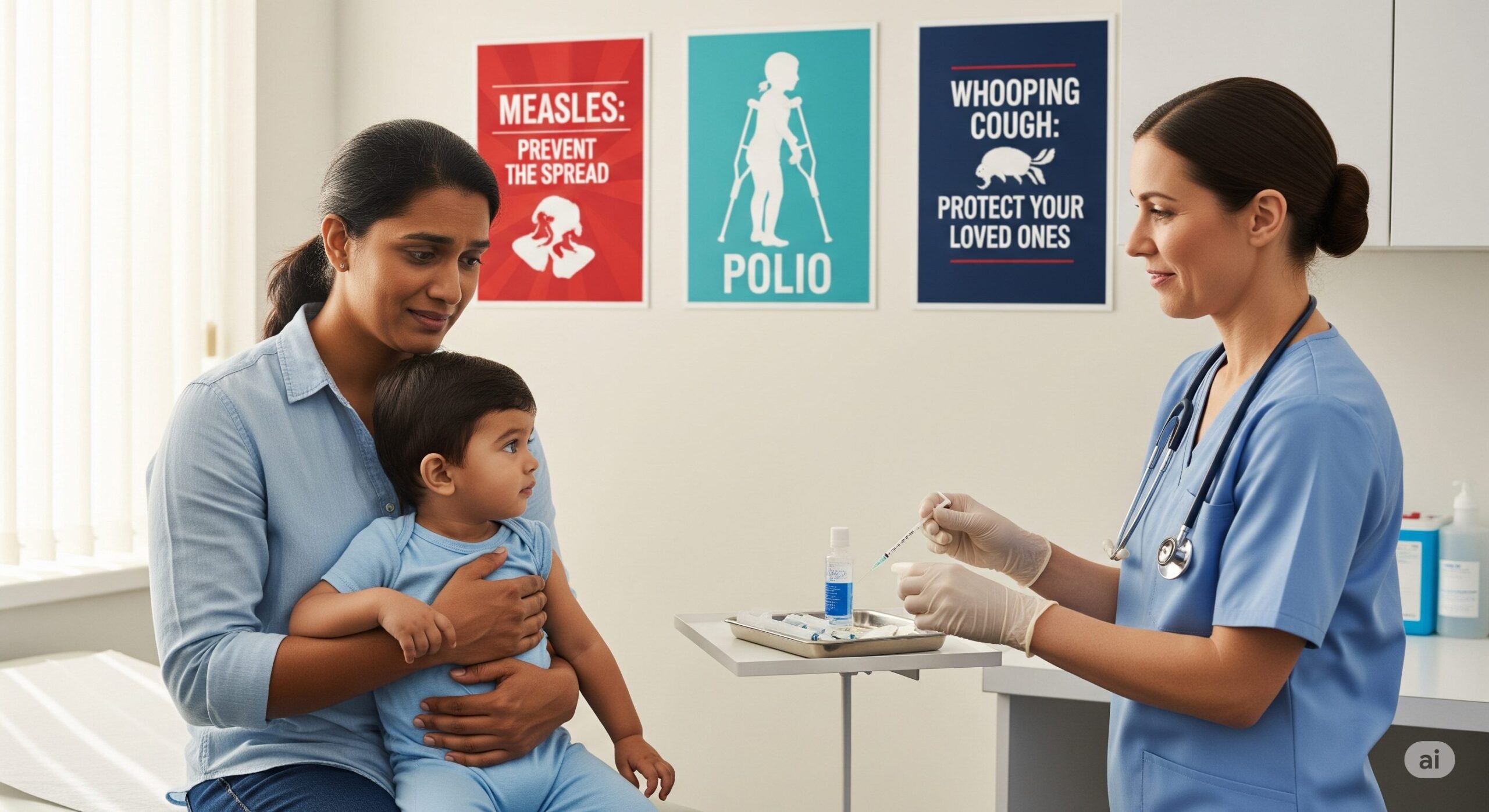Vaccines have been one of the most powerful public health tools in history, saving millions of lives every year. They protect children from deadly diseases like measles, polio, and whooping cough — illnesses that once claimed countless lives before vaccines were introduced. But in recent years, the United States has seen a worrying trend: a widening gap in childhood vaccination coverage. This gap is creating conditions where diseases we once had under control are making a comeback.
From misinformation and healthcare access issues to changing attitudes about vaccines, multiple factors are contributing to this problem. Understanding why these gaps exist — and how to address them — is crucial for safeguarding children’s health and preventing outbreaks.
Why Are Childhood Vaccination Rates Dropping?
The reasons behind declining childhood vaccination rates are complex. While vaccine hesitancy is often in the spotlight, it’s not the only factor.
-
Misinformation on Social Media
The internet has made it easier than ever for false information to spread. Misleading claims about vaccine safety can go viral quickly, leading some parents to delay or skip vaccines altogether.
-
Healthcare Access Barriers
Families in rural areas or low-income communities sometimes struggle to reach healthcare facilities. Long travel distances, lack of transportation, and limited clinic hours make it harder for children to get vaccinated on time.
-
Pandemic Disruptions
COVID-19 caused major interruptions to routine healthcare services. Many children missed their regular checkups during lockdowns, and some still haven’t caught up on their vaccine schedules.
-
Religious and Personal Beliefs
In some communities, cultural or religious beliefs play a role in vaccine refusal. While these represent a small percentage of cases, they can still create clusters of unvaccinated children.
The Return of Preventable Diseases
When vaccination coverage drops, it creates an open door for diseases to spread. In the US, we’ve already seen signs of trouble.
-
Measles Resurgence
Once declared eliminated in the US, measles has returned in several outbreaks. It’s one of the most contagious diseases in the world, and even small pockets of unvaccinated children can trigger large outbreaks.
-
Whooping Cough (Pertussis)
This highly contagious respiratory infection has been on the rise in some states, leading to hospitalizations in infants who are too young to be fully vaccinated.
-
Polio Detection in Wastewater
Polio, a disease that can cause lifelong paralysis, was detected in US wastewater samples recently. This is a serious warning that low vaccination rates could allow it to reemerge.
How Vaccine Gaps Affect the Whole Community
Vaccination doesn’t just protect the child receiving the shot. It also protects those who can’t be vaccinated — such as newborns or individuals with weakened immune systems — through herd immunity. When enough people are vaccinated, diseases have fewer chances to spread.
But when vaccination coverage drops below certain thresholds, herd immunity breaks down. This puts entire communities at risk, especially vulnerable groups. For example:
-
An unvaccinated child may unknowingly carry measles to a school, infecting infants and immune-compromised children.
-
A localized outbreak can quickly cross state lines, as we’ve seen with measles spreading during travel.
The Role of Schools and State Policies
In the US, vaccination requirements for school enrollment have been one of the strongest tools for keeping coverage high. However, in some states, exemptions for personal or religious beliefs have become more common. While these exemptions are meant to protect individual rights, they can also lead to clusters of unvaccinated children in the same school or community — increasing outbreak risk.
Some states have responded by tightening exemption rules, but others have loosened them, creating an uneven patchwork of policies nationwide.
Steps Parents Can Take to Protect Their Children
-
Keep a Record
Maintain an up-to-date vaccine record for your child, and check it regularly with your pediatrician.
-
Catch Up on Missed Shots
If your child has missed vaccines due to illness, travel, or pandemic disruptions, ask your healthcare provider about catch-up schedules.
-
Rely on Credible Sources
Get vaccine information from reliable sources like the Centers for Disease Control and Prevention (CDC) or your local health department.
-
Ask Questions
If you have concerns about vaccine safety or ingredients, talk directly with your healthcare provider rather than relying on internet rumors.
Community Solutions to Close Vaccine Gaps
Closing the vaccine gap isn’t just the responsibility of parents — it requires coordinated action from communities, healthcare providers, and policymakers.
-
Mobile Clinics and Outreach
Bringing vaccines directly to communities, especially in rural or underserved areas, can remove barriers like travel distance and cost.
-
Public Education Campaigns
Social media can spread misinformation, but it can also be used to share accurate, compelling stories about vaccine benefits.
-
School-Based Vaccination Programs
Offering vaccines on school campuses makes it easy for children to stay on schedule without extra clinic visits.
-
Policy Enforcement
Strong enforcement of school vaccination requirements, with limited exemptions, can help maintain high coverage rates.
Why the Issue Matters Now More Than Ever
In a globalized world, diseases don’t respect borders. Outbreaks in one country can quickly spread to another through travel. This makes it even more important for the US to maintain high vaccination rates — not just to protect our own children, but to contribute to global disease prevention.
The current gaps in childhood vaccination coverage are a public health red flag. If we don’t address them, we risk reversing decades of progress in fighting preventable diseases.





